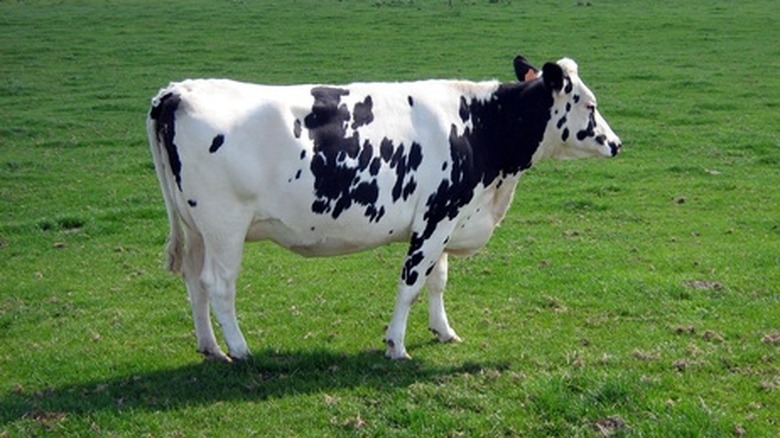How To Make Biogas
Biogas is a type of alternative fuel which can be produced from almost any type of organic waste, from old feedstock to sewage. Composed of the gases methane and carbon dioxide, biogas is produced by the bacteria that decomposes organic waste under anaerobic, or oxygen-free conditions. Biogas is a carbon-neutral fuel, meaning it does not contribute to greenhouse gas levels and is a suitable replacement for natural gas, which is a fossil fuel and contributor to the greenhouse effect. Practical applications of biogas include generating electricity for the power grid, heating, cooking and creating steam power.
Step 1
Create a slurry by mixing the raw organic materials with water in equal ratios by weight. Empty the raw materials into a bucket and weigh it on the scale. Fill the second bucket with water until it is the same weight as the first bucket. Mix the raw material and water together and stir until an even consistency is reached.
Step 2
Pour the slurry into the fermentation chamber of the biogas plant. Add seeding material (sewage waste) in an amount approximately twice that of the raw material by volume. For instance, if your raw material filled up one bucket, two buckets of seeding material should be added to the fermentation chamber.
Step 3
Measure the pH of the slurry inside the fermentation chamber with the pH meter. In order for anaerobic bacteria to function well, a slightly alkaline environment is required. Neutral pH is 7.0, anything below that is considered acidic, anything above that is considered alkaline. Correct pH by adding more water or by carefully adding small amounts of lime to the slurry until the desired pH is achieved. Monitor and if necessary correct the pH throughout the retention period, or period in which biogas is being produced from the slurry.
Step 4
Measure the temperature of the slurry using your thermometer. The ideal temperature is between thirty and forty degrees Celsius within the fermentation chamber, as this is the temperature range at which anaerobic bacteria are most active. If the temperature is too low, utilize a small heat source such as a space heater or if you live in a warm climate, dig a hole in the ground and line it with insulating materials and place the fermentation tank inside the hole. Monitor and if necessary, correct the temperature throughout the retention period.
Step 5
Mix the slurry by stirring or agitating it thoroughly at least once per day throughout the retention period. The length of the retention period is dependent upon several factors such as temperature and slurry composition. However, a common retention time for this type of biogas plant ranges from two to four weeks.
Things Needed
- Biogas plant: fermentation tank and a gas holder
- Organic materials such as livestock waste, old straw or corn
- pH meter
- Thermometer
- Sewage waste (seeding material)
- Wood chips
- Space heater
- Shovel
- Two buckets
- Scale
- Stirring Rod
- Lime
TL;DR (Too Long; Didn't Read)
The presence of large amounts of pesticides, medications or chemical adulterants in the slurry may inhibit the growth and metabolism of anaerobic bacteria, and thus cause poor yields. Consistently adding new raw and seed materials to the fermentation chamber can result in an almost continual production of biogas. The addition of too many nitrogen-rich materials, such as sewage and livestock waste may result in a toxic accumulation of ammonia within the slurry. If ammonia poisoning occurs it can be remedied by dilution and the addition of high carbohydrate materials such as grasses or straw.
Warning
If the fermentation chamber is not airtight during the retention period, the bacteria which produce methane will be exposed to oxygen and die. The environment within the fermentation chamber must be completely free of oxygen throughout the retention period.
Cite This Article
MLA
Gallagher, Ethan. "How To Make Biogas" sciencing.com, https://www.sciencing.com/make-biogas-7769060/. 24 April 2017.
APA
Gallagher, Ethan. (2017, April 24). How To Make Biogas. sciencing.com. Retrieved from https://www.sciencing.com/make-biogas-7769060/
Chicago
Gallagher, Ethan. How To Make Biogas last modified March 24, 2022. https://www.sciencing.com/make-biogas-7769060/
